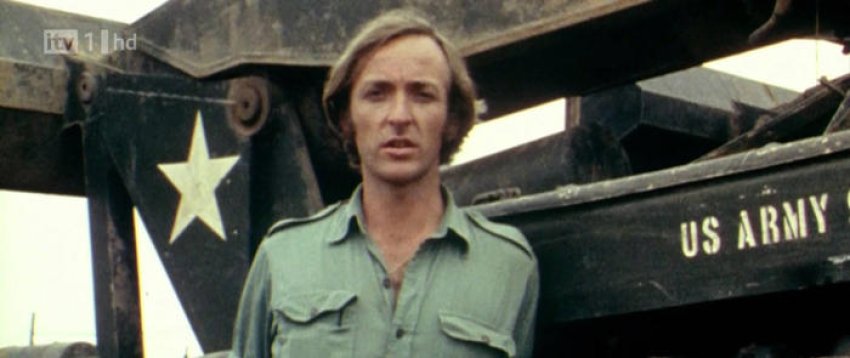

The incredible account of the break-up of the US military in Vietnam
John Pilger’s first film, The Quiet Mutiny, made in 1970 for the British current affairs series World in Action, broke the sensational story of insurrection by American drafted troops in Vietnam. In his classic history of war and journalism, The First Casualty, Phillip Knightley describes Pilger’s revelations as among the most important reporting from Vietnam. The soldiers’ revolt – including the killing of unpopular officers – marked the beginning of the end for the United States in Indo-China.
Known as ‘grunts’, conscripted men complain bitterly to the camera about their given role as ‘frontline fodder’. One soldier describes how an officer who sent his men into danger ‘kind of got shot’. Even one of the ‘Donut Dollies’ – a female singing group sent to entertain the grunts – ‘kind of got shot’.
Pilger and his director, Charles Denton, camera operator George Jesse Turner and sound recordist Alan Bale base themselves on a remote American firebase codenamed ‘Snuffy’. Surrounded by jungle and an enemy they cannot see, the men of ‘Snuffy’ are determined to survive. They notch the days on their rifle butts, fire artillery into the darkness and call it ‘mad minutes’.
Pilger goes on patrol with a platoon of grunts who are ordered to ‘shoot everything that moves… including a chicken, because it might be a Vietcong chicken’. When they return to base, they report their ‘body count’ – including the chicken. More than half of all US Army deaths in Vietnam, says Pilger, are caused by ‘friendly fire’ – soldiers killing each other: mistakenly, accidentally or intentionally.
Much of The Quiet Mutiny’s strength is its irony and black sense of humour, which were to become Pilger’s trademarks. His interviews with American officers who might have stepped out of the pages of Catch-22 could make viewers laugh in the middle of a film about war. There is the bored psyops (psychological operations) officer who plays a ‘Wandering Soul’ tape from a helicopter (‘the ghosts of the ancestors of the Vietcong exhorting them to surrender’) while throwing out whole boxes of leaflets. He muses that ‘maybe we’re hoping to hit someone’ and produce a ‘direct result’.
The Quiet Mutiny ends with seriously wounded soldiers being stretchered on to a flight home while The Beatles lament, ‘Yesterday, all my troubles seemed so far away…’ Pilger described the final sequence to Paul McCartney, who allowed him to use his recently composed classic, Yesterday, to accompany it.
Following its broadcast on the ITV network, Walter Annenberg, the American ambassador in London, a personal friend of President Richard Nixon, complained to the Independent Television Authority, then the commercial TV regulator in Britain. World in Action’s editor, Jeremy Wallington, and Granada Television’s joint chairman, Denis Forman, were summoned by the ITA’s chief, Sir Robert Fraser, who was apoplectic. ‘He described you as a threat to Western civilisation,’ Wallington told Pilger.
This was a warning of the battles that Pilger would face for many years as he refused to compromise his hard-won reputation for independence. He credits the success of The Quiet Mutiny to his collaboration with a fellow renegade, the former BBC producer Charles Denton, whose haunting selection of popular music gives this rare and powerful documentary a lyrical sense. ‘Charles taught me to break rules in film-making,’ said Pilger. This principle is reflected in the four films they made together — two in Vietnam — and in all of Pilger’s 60 documentaries. The Quiet Mutiny won seven awards. The war in Vietnam ended in defeat for the United States on 30 April 1975. As many as four million people lost their lives and a once bountiful land was laid to waste.
The Quiet Mutiny was first broadcast on ITV on 28 September 1970


